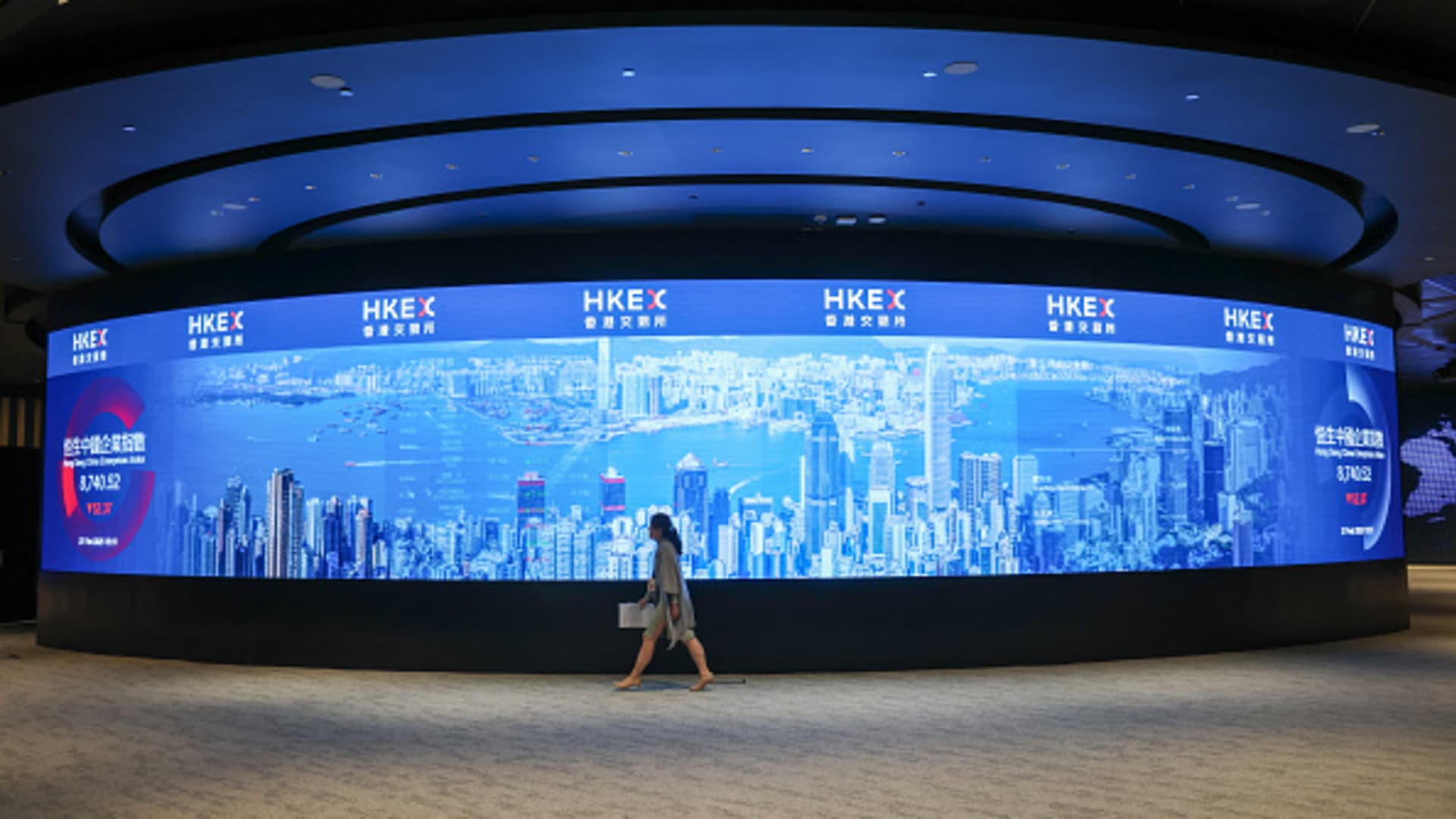Hong Kong’s stock exchange reported its highest quarterly profit in nearly four years after China’s stimulus measures boosted trading and listing volume.
Bloomberg | Bloomberg | Getty Images
HONG KONG — The boom in initial public offerings in Hong Kong has offered a long-awaited release valve for private equity firms sitting on aging China portfolios, top fund executives said at an industry panel Tuesday.
After years of muted dealmaking and frozen exits, the opportunity to list in Hong Kong at attractive valuations has lifted sentiment, with companies raising $18.2 billion via IPOs this year as of October, putting the financial hub on track to become the world’s largest listing destination this year.
The rebound in Hong Kong-listed stocks — the Hang Seng Index is up more than 28% so far this year, outperforming the S&P 500 with less than 13% gains — has further buoyed confidence.
Global private equity firms are cautiously turning bullish on China after spending the past few years on the sidelines. Cheaper valuations and hopes that domestic consumer confidence could start recovering are drawing investors back to the world’s second-largest economy.
“In consumer-investing in China, you effectively have an opportunity to buy growth at a discount,” said Scott Chen, managing partner at global private equity firm L Catterton, citing the rapid rise of domestic brands and massive household savings.
“The worst is behind us and consumer confidence is starting to turn,” Chen added, expecting consumers will increasingly favor homegrown brands.
Echoing that sentiment, Nikhil Srivastava, partner and co-head of private equity at alternative investment firm PAG, said that Chinese assets have become more attractive as many global players have pulled back, reducing competition.
“What that means is that you can buy market-leading assets very cheap. These are high-quality, domestic consumption-driven assets that you can buy at pretty attractive multiples,” Srivastava added.
The shift in positioning follows years in which global allocators harbored an “anything but China” mindset, according to Tim Huang, partner at U.S.-based Lexington Partners. “The investment sentiment really swung from one way to the other [when] the truth lies somewhere in the middle.”
The opportunity in China remains compelling for investors with discipline and long-term commitment, Huang added.
Narrow IPO window?
Returns to investors in the form of distribution of profits from the portfolio companies has helped mitigate some investor concerns in the absence of exits.
“While the exit market might be a little bit challenged, when you are getting paid 15-20% cash-on-cash returns, assuming no growth — and if there’s growth, you generate more cash — clearly you are getting paid to wait,” Srivastava said.
Still, the surge in IPO activity in Hong Kong is particularly significant for China-focused PE fund managers that have struggled to exit investments since 2021 as they search for better returns.
With corporate mergers and acquisitions still sluggish and domestic Chinese listings tightly regulated, Hong Kong offers a much-needed outlet. But experts have warned that the backlog of applications could delay plans to exit and take advantage of the momentum around Hong Kong-listed stocks.
More than 300 IPO applications were still under processing as of end-October, according to the Hong Kong Stock Exchange, compared to less than 70 that were pending approval in the same period last year.
Wu Qing, head of China Securities Regulatory Commission, last month reiterated the regulator’s pledges to streamline processes for Chinese firms to list abroad and deepen the financial link between the mainland and Hong Kong.
As Hong Kong’s markets recover, “we do believe that the growth will accelerate and then opportunities to exit will also go up,” translating to stronger returns for private equity, Srivastava said.





